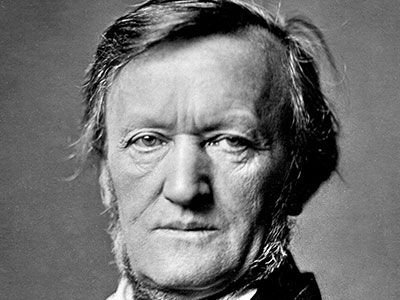Decoding Wagner's 'Art Work of the Future'

In the wake of his participation in the Dresden uprising and his flight to Switzerland, German composer Richard Wagner (1813-1883) wrote The Art Work of the Future (1850). This theoretical text is, in its broadest implication, a sweeping manifesto which proclaims that all the arts (opera included) must renounce their individuality and form an ideal artistic collective, the so-called art work of the future. Even if that comprehensive vision was not realized, the text served, nevertheless, as an advocate for a distinctly Wagnerian operatic reform.
While writing The Art Work of the Future, Wagner had already begun working on his magnum opus, the colossal Ring of the Nibelung cycle. Twenty-six years would pass, however, before all of the four operas in the cycle (Das Rheingold, Die Walküre, Siegfried, and Götterdämmerung) would be completed. Wagner’s early operas differ greatly from his mature ones, so scholars look to The Artwork of the Future as an insight into the composer’s artistic intent.
So, what was Wagner thinking about while writing the Ring cycle? And what was this new kind of art to entail?
Let’s take a look at some of Wagner’s stipulations.
1. In the first place, Wagner identifies a problem with modern (1850) art. It is elitist. It panders to a wealthy, educated audience who can afford the kind of upper class learning that it rewards. Wagner understood that art had lost its vitality by dint of its privatization. As he explains, this art “requires a special study remote from real life, the study of art scholarship” (203). In order for art to affect life, Wagner argues, it must be pleasurable for the lower classes as well. It must be separated from taste, learning, and cultural capital.
2. Art ought to aspire, then, to total inclusivity. When it achieves this, it glorifies all of humanity, or, what Wagner calls “mankind in art altogether.” (203).
3. Wagner exalts drama: “the highest purpose of man is art, the highest artistic purpose, drama.” (205). Drama, here, most closely means music drama. Scholars classified, and still classify today, the Ring cycle as music drama, despite Wagner’s rejection of the term. Opera is also an insufficient identifier, though. Wagner was staunchly opposed to such independent art forms as opera and spoken drama, urging that they be integrated with all other arts.
4. Architecture, too, must be synthesized with all other arts. Since the highest art is drama, architecture’s highest purpose is the construction of the theatre. One of the great achievements in Wagner’s career was the creation of the Bayreuth Festival Theatre, erected solely for the performance of his works. Anyone who has had the pleasure of experiencing the acoustics at Bayreuth can attest to Wagner’s words: “through looking and hearing, the audience is completely transported onto the stage” (205).
5. Landscape painting ought to service the scenery of the drama, not the living rooms of the wealthy. Here, again, Wagner calls up the commodification of art, which has been purloined by the upper classes.
6. The dramatic actor is an artist only insofar as he is also a dancer, musician, and poet. Movement, song, and language combine in this, the ultimate artist. There is a reciprocity here, though: “the poet in truth only becomes a man through his passage into the flesh and blood of the actor.” (208).
7. Finally, music, of course, is the crown jewel of all the arts. The orchestra is the single most expressive organ and when all other arts join it, the art of the future is born.
Richard Wagner’s writings on the communion of all the arts for the glorification of humanity are, at times, impenetrable. That is not to say that they do no present some luscious food for thought, though – or that Wagner’s vision was not in some ways achieved by the cultural endurance of the Ring cycle.
Source: Wagner, Richard. “The Art Work of the Future.” Opera: A History in Documents, edited by Piero Weiss, Oxford UP, 2002, pp. 203-211.
Gabriella Lombardo is a guest contributor to WHRB Classical and a member of the News Department.